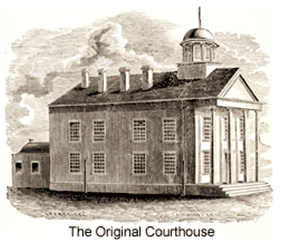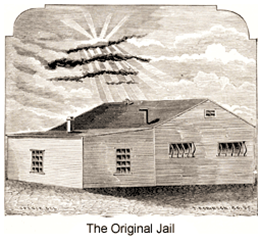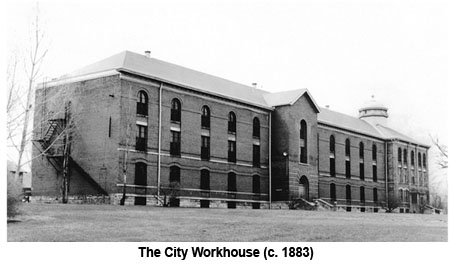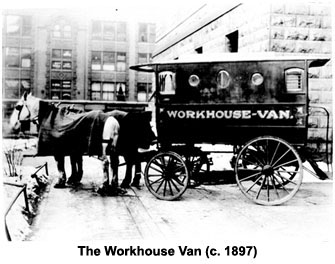The Original Saint Paul Jail
by Edward J. Steenberg
Saint Paul Police Historical Society
Numerous sources were utilized in writing this document, many of which can be found on our
Saint Paul Police Historical Society website of www.spphs.org. – E. Steenberg
"There should be proper and safe places of confinement in the Territory provided for prisoners; and I am convinced, that the nearly total want of these, is ordinarily a chief cause of the weakness of the law on the frontier." 1
Minnesota became a U.S. Territory on March 3, 1849, with Saint Paul, a village of eighteen homes, designated as the county seat of the newly created Ramsey County and as the territorial capital. On November 1, 1849 the "Town of Saint Paul" was incorporated by the Territorial Legislature; and as a "City" five years later, on March 4, 1854. Minnesota became a state on May 11, 1858. The Minnesota Territorial Prison, later the Minnesota State Prison, opened in 1853.
When Minnesota first became a territory, there were no official jails. Convicts had been confined at the Round Tower and the Guard House in the U.S. Army post of Fort Snelling historically since 1820, and also at what was then U.S. Fort Ripley. Many prisoners escaped from the army posts, negating that purpose. As urban centers Saint Anthony (Minneapolis) and Saint Paul expanded after the 1840s and territorial status, there was a more urgent need for a new system of incarceration.
 In the wake of several murder cases, everyone was in agreement, the guard house at Fort Snelling had done duty long enough; and besides, there was a growing demand for a home institution – wherein to punish violators of the law. In order to raise the money to build a territorial courthouse 2 and jail, the County Board ordered the issue of some county bonds and the courthouse corner stone was laid near the corner of Wabasha and Fourth Streets 3 on land donated by French Canadian voyageur, farmer and philanthropist Vetal Guerin 4 in the fall of 1850. When finished and ready for occupancy a year afterward, it was an imposing two-story structure and quite as commodious and complete as it was handsome. Built of stone taken from near-by quarries, it was a model of simplicity in architecture, with its Corinthian pillared porch and dome-shaped tower.
In the wake of several murder cases, everyone was in agreement, the guard house at Fort Snelling had done duty long enough; and besides, there was a growing demand for a home institution – wherein to punish violators of the law. In order to raise the money to build a territorial courthouse 2 and jail, the County Board ordered the issue of some county bonds and the courthouse corner stone was laid near the corner of Wabasha and Fourth Streets 3 on land donated by French Canadian voyageur, farmer and philanthropist Vetal Guerin 4 in the fall of 1850. When finished and ready for occupancy a year afterward, it was an imposing two-story structure and quite as commodious and complete as it was handsome. Built of stone taken from near-by quarries, it was a model of simplicity in architecture, with its Corinthian pillared porch and dome-shaped tower.
 Dr. David Day, a physician serving as county clerk, designed the building, for which he was paid ten dollars. It was in those days considered a beautiful model of architectural skill. Cyrus Freeman and Joseph Daniels were the contractors, and the cost of the courthouse building was somewhere in the neighborhood of $9,000. The little old jail stood immediately in back of it, and was a much inferior edifice. This was the first actual jail built in Minnesota. Overall, the jail was a modest rectilinear building constructed from logs and weather-boarded, with a gabled roof. The building looked like a log cabin; the only feature indicative of its use as a jail were the small windows enclosed with circular iron bars, wide enough apart to admit of any and all outside communication desired, above the first floor. In all, there was room for only five or six prisoners which fit the needs of the small capital of Saint Paul. The jail was to be used for serious offenders of the law, such as those convicted of murder or aggravated battery. It was noted by the Minnesota Pioneer in 1854 to be a "miserable pig-sty."
Dr. David Day, a physician serving as county clerk, designed the building, for which he was paid ten dollars. It was in those days considered a beautiful model of architectural skill. Cyrus Freeman and Joseph Daniels were the contractors, and the cost of the courthouse building was somewhere in the neighborhood of $9,000. The little old jail stood immediately in back of it, and was a much inferior edifice. This was the first actual jail built in Minnesota. Overall, the jail was a modest rectilinear building constructed from logs and weather-boarded, with a gabled roof. The building looked like a log cabin; the only feature indicative of its use as a jail were the small windows enclosed with circular iron bars, wide enough apart to admit of any and all outside communication desired, above the first floor. In all, there was room for only five or six prisoners which fit the needs of the small capital of Saint Paul. The jail was to be used for serious offenders of the law, such as those convicted of murder or aggravated battery. It was noted by the Minnesota Pioneer in 1854 to be a "miserable pig-sty."
 "Think of a modern prisoner on trial for assault with the intent to kill… and to leave town! And, what is more, to succeed in so doing." 5
"Think of a modern prisoner on trial for assault with the intent to kill… and to leave town! And, what is more, to succeed in so doing." 5
As with Fort Snelling in previous years, the original jail in Saint Paul also struggled with escaping prisoners. Out of the six prisoners who were confined therein, five escaped. It was used until 1857, when it was supplanted with the building of a new city hall and "lock-up." Subsequent central police headquarters, likewise, had their own jails.
Retired Forensic Artist Paul D. Johnson designed and custom-built a display plaque for a padlock utilized in the original jail. The plaque and padlock can be viewed in the police museum on the second floor of the Griffin Building (Police Headquarters), 367 Grove Street, Saint Paul, MN 55101.
On August 12, 1856, the common council authorized the purchase of a lot at Fifth and Washington Streets, and the erecting thereon of a City Hall, with a "lock-up" located in the first floor. This entire investment amounted to $8,000, and bonds were issued for that sum. One Baron Von Glahn, a capitalist, bought the entire issue of bonds, and the building was erected. The Baron was not only a capitalist but was also a convivial bird, and it so chanced that he got his nose wet right after the completion of the new "lock-up" and he was the first tenant – a prisoner in his own jail.
Other "proper and safe places of confinement" developed as well during this time period, some of which include the following:
 The Minnesota Territorial Prison, later the Minnesota State Prison, was a prison located in Stillwater, in operation from 1853 to 1914 when it relocated to a new facility in Bayport. The prison was well-known because it once housed Cole, Bob and Jim Younger, accomplices of Jesse James in the James-Younger Gang.
The Minnesota Territorial Prison, later the Minnesota State Prison, was a prison located in Stillwater, in operation from 1853 to 1914 when it relocated to a new facility in Bayport. The prison was well-known because it once housed Cole, Bob and Jim Younger, accomplices of Jesse James in the James-Younger Gang.
The state's first reform school was built in Saint Paul in January of 1868 on the grounds of present-day Concordia University, and the Sisters of the Good Shepherd opened an eight room cottage downtown under an agreement with the police department "to accept and hopefully to rehabilitate female offenders" in December of the same year. The State Reform School later relocated to Red Wing and the Sisters moved to the House of the Good Shepherd on West Minnehaha (now Frogtown Farm and Park). The Sisters later moved to North Oaks.
An added mark of correctional development was the establishment of the Saint Paul City Workhouse "out in the woods" at what is now Como Park in February of 1883. Prior to that time petty offenders had been lodged in the city lockup to serve the terms of their sentences and had been compelled to work with the chain gang (in name only), which in the early days took the place of the city street department. A few years before the workhouse was located at Como a unique institution was provided by the city at Smith Park (now Mears Park). It was known as the "stone pile" and starting in 1879, tramps and short-term prisoners who had been fined and were unable to pay the money, were obliged to work there daily with their sledgehammers. Thusly, they were able to work off their fines, at $1 per day. The city's Como edifice later became the Ramsey County Workhouse and relocated to Maplewood in 1960.

Decentralization of the Saint Paul Police Department took place on May 1, 1887 with the opening of four new police substations, and the city divided into five districts. Each of the substations had its own holding cells, with the main city jail being in the central station, downtown. Each day the workhouse van made the trip to each of the substations, as well as the central station, transporting prisoners to court and/or to the city workhouse. That continued until the new Public Safety Building opened at 101 East Tenth Street in 1930 centralizing operations… including a city jail located on the top floor of the building. On April 26, 1972 the Ramsey County Sheriff took over the operations of the city jail. Prior to that, it had been staffed and operated by the police department. After almost 125 years, we were out of the jail business.

1 Alexander Ramsey, First Session of the Legislative Assembly of the Territory of Minnesota on November 1, 1849.
2 Combined with the town hall.
3 The original courthouse and jail was built on a lot bounded by Wabasha, Cedar, Fourth, and Fifth Streets.
4 Based on property values, Vetal Guerin was reportedly the city's first millionaire (sources say he later was defrauded of his money) and donated land for what would become the original courthouse and jail, as well as for the original Saint Paul Cathedral (Father Galtier's Chapel of Saint Paul) and many other public buildings.
5 "History of the Police and Fire Departments of the Twin Cities", 1899, Chapter 1; SPPD History Page, Saint Paul Police Historical Society Website.
